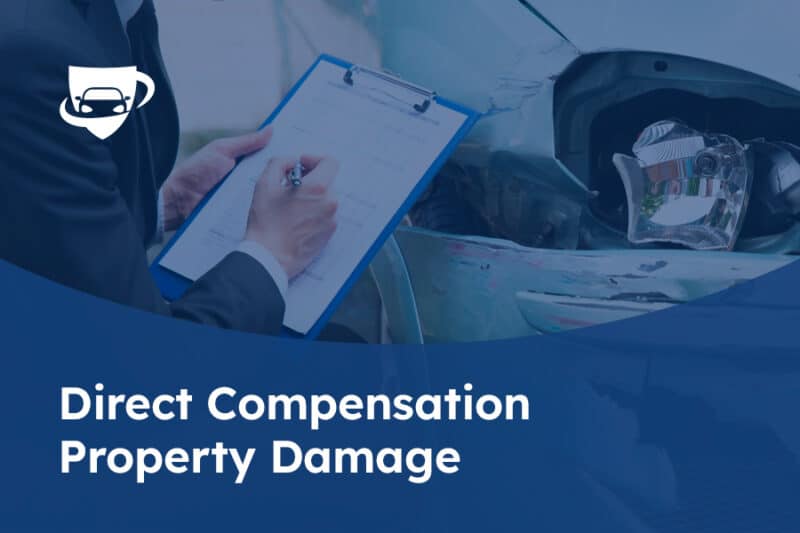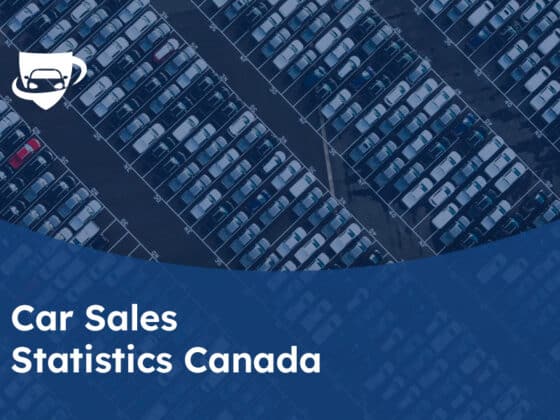Direct compensation property damage insurance is a type of auto insurance that provides coverage for damage to your vehicle caused by another driver. This type of insurance is often required by law to operate a car on the road.
While it may seem like an unnecessary expense, it can provide peace of mind in the event of an accident.
All in all, this insurance is an integral part of owning a vehicle. So, please read this article and learn why as we go into more detail.
What Is Direct Compensation Property Damage?
In Canada, DCPD is a type of auto insurance coverage. If you have an accident where another driver is at fault or partially at fault, your own insurance company will pay for the repairs to your vehicle.
DCPD coverage is mandatory in almost all provinces. But we will talk more about that later.
Given what we have learned from the DCPD meaning, DCPD does not cover the cost of repairs to the other driver’s vehicle.
This insurance can provide peace of mind in knowing that you will not have to pay out-of-pocket for repairs if you have an accident that was not your fault.
Therefore, when comparing auto insurance policies, make sure you check whether DCPD is included in the coverage.
Is Direct Compensation Property Damage Mandatory?
As a part of the no-fault car insurance system, DCPD is a mandatory element of car policies in almost every Canadian province. So, let’s take a closer look, and find out the annual cost for this coverage in some regions.
DCPD: Quebec
In Quebec, all drivers must have this insurance. Its cost varies depending on the province. However, Quebec has the cheapest rates, with an annual premium of just $717.
Direct Compensation Property Damage: Alberta
As of January 1, 2022, DCPD is mandatory coverage for all automobile insurance policies in this province. In addition, this will either reduce premiums for the majority of drivers, or premiums will not be changed at all.
Taking this into consideration, it is vital to be aware of the changes coming into effect and how they may affect your insurance costs.
Direct Compensation Property Damage: New Brunswick
In New Brunswick, all drivers have to possess this type of insurance. Furthermore, the cost of this coverage is typically somewhere around $867 per year.
In addition, if you are involved in an accident, your compensation will depend on how much fault you are determined to have under the Fault Determination Regulation. Also, in some cases, a deductible may apply.
Direct Compensation Property Damage: Newfoundland
Newfoundland requires all drivers to carry this insurance. Moreover, the premium for this coverage is $1,168 per year.
However, given the frequency of severe weather events in Newfoundland, the cost of this insurance is well worth it for many people.
DCPD: Prince Edward Island
DCPD is mandatory on Prince Edward Island. In addition, the yearly cost of this insurance is $816.
Direct Compensation Property Damage: Nova Scotia
As of April 1, 2013, this insurance is mandatory in the province of Nova Scotia. That means that all drivers have to possess DCPD coverage as a part of their automobile insurance policy.
In addition, the average cost of this insurance in Nova Scotia is around $891 per year. That is the second-highest annual cost among the provinces in Canada.
Direct Compensation Property Damage: Ontario
The cost of DCPD coverage in Ontario is the highest among all the provinces, at $1,505 per year.
Despite the high cost, drivers in Ontario still have to own this insurance to operate a vehicle on the road legally.
While it may be costly, DCPD coverage provides peace of mind knowing there will be coverage for any property damage caused by an accident.
Is Direct Compensation Property Damage Mandatory in Ontario?
In Ontario, all drivers have to possess this insurance. As a matter of fact, direct compensation is a part of all basic car insurance policies in Ontario.
This means that if you have an accident that is not your fault, your insurance company will reimburse you for any damage to your vehicle.
So, you can rest assured knowing that your insurance company has you covered, thanks to the direct compensation property damage in Ontario.
Direct compensation agreements have been implemented to simplify and improve the claims process. Before, if you were involved in a not-at-fault accident, your insurance company would have to pursue the other driver’s insurance company and recover damages.
This process could often be lengthy and result in delayed claim payouts. Direct compensation can help reduce the stress and anxiety associated with car accidents.
How Does DCPD Work in Ontario?
If you’re situated in Ontario, you have to meet some specific requirements to qualify for this coverage:
- The insurance adjuster has to establish that you aren’t responsible for the crash.
- At least one more car has to be a part of the accident.
- All parties have to possess valid car insurance.
- The crash needs to have occurred in Ontario or a province mentioned earlier in the article, and the other driver has to own insurance in one of those regions.
In Ontario, many car insurance companies offer direct compensation property damage coverage like Belair Direct. In fact, Belair Direct is one of the best insurance companies in Canada.
However, all these companies would agree there are a few instances where drivers are exempt from using this insurance.
These exemptions include collisions with drivers who are uninsured and hit-and-runs. In the case of a hit and run, the third party is unknown. Therefore, an insurance adjuster cannot get in touch with their insurance company.
As a result, you can’t use your DCPD coverage. Due to the same reason, you can’t take advantage of your DCPD if you have a collision with an uninsured driver.
In Ontario, the direct compensation property damage has a $0 deductible. In other words, there is not a deductible directly related to this type of insurance in most cases unless you have asked for one to lower your premium overall.
However, if you’re considered partly at fault, you will probably be obligated to cover an equivalent percentage from your regular car insurance deductible.
It’s essential to understand all the terms and conditions of your insurance policy to know what to expect if you make a claim.
Direct Compensation Property Damage vs. Collision
While both DCPD and collision insurance cover accident damages to your vehicle, there are some differences. First, with DCPD coverage, the other party has to be at fault for you to use this insurance and cover the damages.
On the other hand, this is not the case with collision insurance. In other words, collision insurance will cover damages even if you are at fault.
Typically, the direct compensation property damage deductible will default to $0. At the same time, people will set a deductible between $500 and $1,000 for collision insurance. In addition, it can go as high as $5,000.
While DCPD coverage is mandatory in most Canadian provinces, like Ontario, Nova Scotia, Alberta, New Brunswick, Prince Edward Island, Quebec, and Newfoundland, collision insurance is optional in Canada.
Wrapping Up DCPD Insurance
Every year, thousands of Canadians die in car accidents. Fortunately, DCPD can help. It is a type of insurance that covers damage to your vehicle caused by another driver. In addition, what’s relieving is that the deductible is $0.
This article has discussed everything you need to know about DCPD. More specifically, it focused on direct compensation coverage, whether it is mandatory, how it works, and the difference between direct compensation and collision insurance.
All in all, having DCPD insurance is a good thing. First, it smooths out the claims process, as you only deal with your insurance company. So, it eliminates the need for you to wait on a third-party decision.
If you have questions about whether DCPD is right for you, talk to your insurance agent. They can help you determine if this insurance is available in your province or territory. Moreover, they can also advise you whether direct compensation property damage is the best option for your needs.







